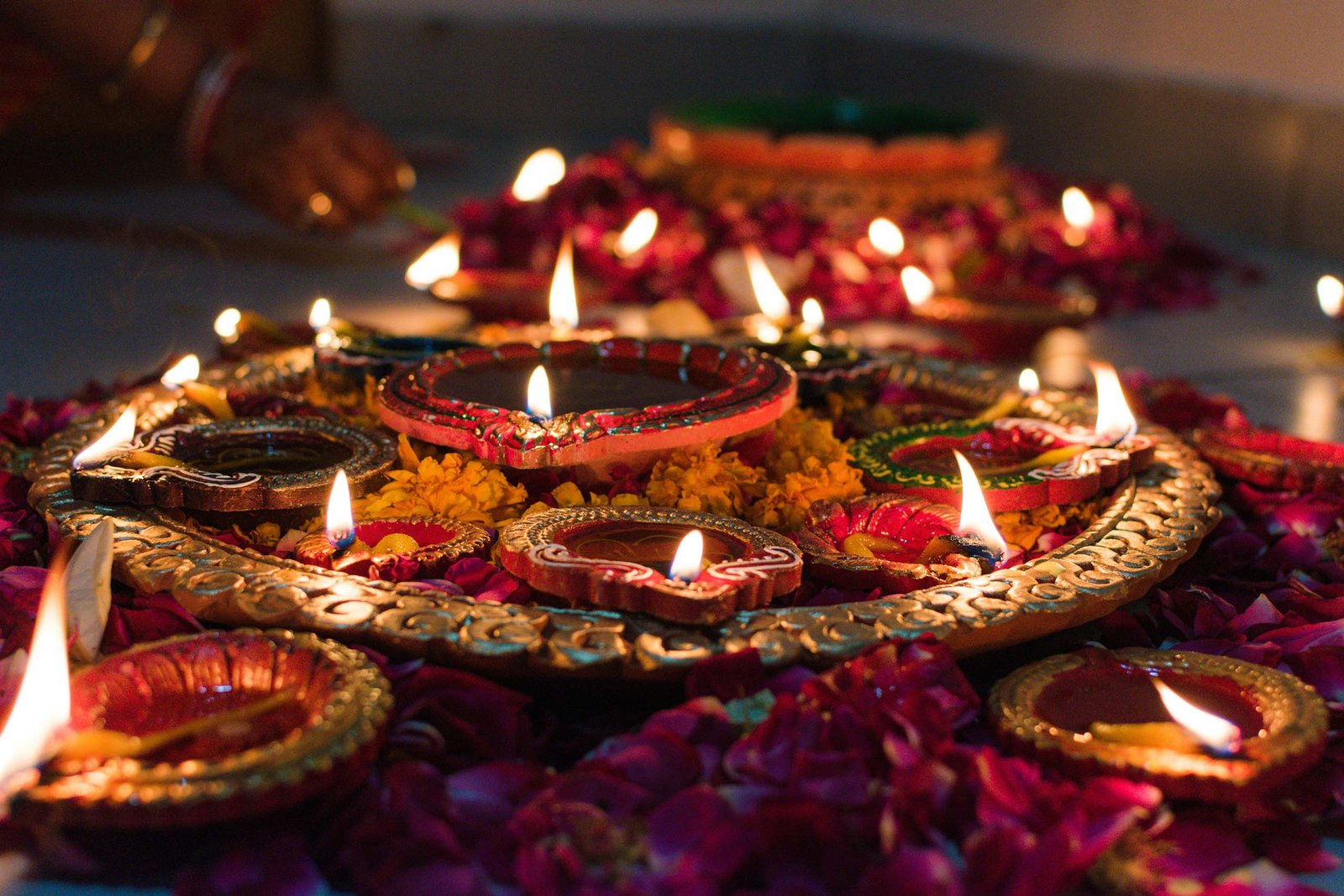
Celebrating South Asia: A Year of Festivals, Traditions, and Flavors
Discover the maior holidays celebrated in the South Asia, their signifcance, traditional celebrations, and iconic foods.
1. Diwali (Date varies, usually October or November)
– Significance: Known as the “Festival of Lights,” it symbolizes the victory of light over darkness and good over evil.
– Celebration: Lighting oil lamps (diyas), fireworks, exchanging gifts, and decorating homes with rangoli (colorful patterns).
– Food: Sweets like laddoos, jalebi, and barfi, as well as savory snacks like samosas and kachoris.
2. Holi (Date varies, usually March)
– Significance: Celebrates the arrival of spring and the triumph of good over evil.
– Celebration: Throwing colored powders and water, dancing, and singing.
– Food: Gujiya (sweet dumplings), thandai (a spiced milk drink), and puran poli (sweet flatbread).
3. Eid al-Fitr (Date varies, based on the Islamic lunar calendar)
– Significance: Marks the end of Ramadan, the holy month of fasting.
– Celebration: Prayers at the mosque, family gatherings, giving gifts, and donating to charity.
– Food: Sheer khurma (a milk-based dessert), biryani, and kebabs.
4. Eid al-Adha (Date varies, based on the Islamic lunar calendar)
– Significance: Commemorates the willingness of Prophet Ibrahim (Abraham) to sacrifice his son in obedience to God.
– Celebration: Prayers, sacrificing an animal (usually a goat, sheep, or cow), and distributing meat to family, friends, and the needy.
– Food: Meat dishes like kebabs, curries, and biryani.
5. Navratri and Durga Puja (Date varies, usually September or October)
– Significance: Honors the goddess Durga and her victory over the buffalo demon Mahishasura.
– Celebration: Fasting, dancing (Garba and Dandiya), and elaborate pandal (temporary structure) decorations.
– Food: Fasting foods like sabudana khichdi (tapioca pearls), kuttu ka atta (buckwheat flour) dishes, and sweets like rasgulla.
6. Vaisakhi (April 13 or 14, primarily in Punjab)
– Significance: Celebrates the Sikh New Year and the founding of the Khalsa Panth.
– Celebration: Parades, singing hymns, and performing traditional dances like Bhangra and Giddha.
– Food: Langar (community meal), kadhi chawal (yogurt-based curry with rice), and makki di roti with sarson da saag (cornbread with mustard greens).
7. Pongal/Makar Sankranti (January 14 or 15)
– Significance: A harvest festival celebrating the sun god and the arrival of longer days.
– Celebration: Cooking Pongal (a rice dish), flying kites, and decorating homes with kolam (rangoli).
– Food: Pongal (sweet and savory rice dishes), til ladoo (sesame seed sweets), and sugarcane.
8. Onam (Date varies, usually August or September, primarily in Kerala)
– Significance: Celebrates the homecoming of the mythical King Mahabali and the harvest season.
– Celebration: Snake boat races, traditional dance (Kathakali), and creating flower carpets (pookalam).
– Food: Sadya (a feast served on banana leaves) with dishes like avial, sambar, and payasam.
9. Lohri (January 13, primarily in Punjab)
– Significance: Celebrates the winter solstice and the harvest of rabi crops.
– Celebration: Bonfires, singing folk songs, and dancing Bhangra.
– Food: Til (sesame) and gur (jaggery) sweets, popcorn, and peanuts.
10. Raksha Bandhan (Date varies, usually August)
– Significance: Celebrates the bond between brothers and sisters.
– Celebration: Sisters tie a rakhi (sacred thread) on their brothers’ wrists, and brothers give gifts in return.
– Food: Sweets like laddoos, kheer (rice pudding), and shrikhand.
11. Independence Day (August 15, India)
– Significance: Celebrates India’s independence from British rule in 1947.
– Celebration: Flag-hoisting ceremonies, parades, and cultural programs.
– Food: Tricolor-themed dishes, biryani, and sweets like jalebi and rasgulla.
12. Dashain (Date varies, usually September or October, Nepal)
– Significance: The longest and most significant Hindu festival in Nepal, celebrating the victory of good over evil.
– Celebration: Receiving tika (a mixture of yogurt, rice, and vermillion) and jamara (barley sprouts) from elders, flying kites, and playing card games.
– Food: Sel roti (rice doughnuts), mutton curry, and various sweets.
13. Buddha Purnima (Date varies, usually April or May)
– Significance: Celebrates the birth, enlightenment, and death of Gautama Buddha.
– Celebration: Visiting temples, meditating, and offering prayers.
– Food: Vegetarian meals, kheer (rice pudding), and fruit offerings.
